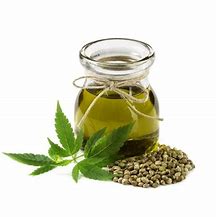Rapeseed Oil - Carrier Oil




Rapeseed Oil - Carrier Oil
Latin name:
Brassica napus, Brassica campestris
Family:
Cruciferae
Etymology:
From the Latin (napus) and Greek word for turnip. brassica is the latin name for cabbage, while campestris means of the fields.
The Plant and its Environment
The plant has intense yellow flowers which are so remarkable a feature of the British countryside in early summer. It grows to a height of about 1.5 metres (5 feet): produced in China in great quantity.
Method of Extraction
The seeds contain 35-40% oil, and after extraction the exhausted seeds are used as cattle fodder.
Principal Constituents
Mono- polyunsaturated fats account for about 90% of this oil.
| Saturated | 8 |
| Monounsaturated | 55 |
| Polyunsaturated | 37 |
Physical Properties
Energy value Kcal/100 ml 897
The storage properties of rapeseed oil are not good.
Therapeutic Properties
only a highly refined oil is available and therefore there are no significant therapeutic properties.
Cosmetic Use
Rapeseed oil has no particular merit for either aromatherapy or cosmetic purposes.
Culinary Use
The oil is used commercially in food production and is also used to a small extent in the home. It is not a stable oil for frying and so is best used in salad dressings, but suffers the disadvantage that it has no taste or flavour.
Cautionary Notes
A proportion of rapeseed oil is treated and used to lubricate farm machinery.
This oil is not edible. Canola oil - processed rape seed oil - may contain erucic acid, a highly toxic substance which is known to cause heart damage and cancer ( Anon 1997) High erucic (acid) rapeseed oil contains 50% erucic acid, but oils for human consumption have been genetically modified so that the plants contain little or no erucic acid ( Steir 1990): used in additives for the plastics industry, antifoaming agents, detergents (Bruneton 1995)
Reference: Carrier Oils For Aromatherapy and Massage: Len Price with Ian Smith & Shirley Price
Articles-Most Read
- Home
- Contact Us
- Coconut Oil-2
- Absorption Ratings for Carrier Oils
- Cold Pressing Method
- What are Essential Fatty Acids
- Cherry Kernel Oil
- Fixed Oils and Skin Penetration
- Hempseed Oil
- Almond Oil
- Cocoa butter
- Camelina Oil
- Coconut Oil
- Antibacterial Effects Of Carrier Oil
- Lime Blossom Oil (macerated)
- Carrot Oil, Wild Carrot Oil (macerated)
- Apricot Kernel Oil
- Kukui Nut Oil
- Jojoba Wax
- Pumkin Seed Oil - Cucurbita maxima, C. pepo
- Passion Flower OIl (Macerated)
- Hydrocotyle Oil (macerated)
- Rapeseed Oil - Carrier Oil
- Palm Kernel Oil
- Nutrients
Who's On Line
We have 59 guests and no members online
Articles-Latest
- How to Make Homemade Olive Oil: A Step-by-Step Guide
- 20 Evidence-Based Aloe Vera Oil Benefits For Skin, Hair & Health
- Peanut oil - Cold pressed - Are There Health Benefits? How To Make
- What Are the Health Benefits of Black Seed Oil?
- Comfrey oil Infused
- Chamomile Flowers Infused Oil
- Calendula Flowers Infused Oil
- Arnica Flowers Infused Oil
- How To Make Herb-Infused Oils
- DIY avocado oil for healthy skin
- How To Make Coconut Oil
- 8 Benefits of Mustard Oil, Plus How to Use It
- SHOREA STENOPTERA SEED BUTTER
- Shea Butter- 7 Amazing Benefits Of Shea Butter
- Monoi Oil For Hair & Skin
- Mango Seed Oil
- Cohune Oil Is The Next Big Thing
- Brazil Nut OIl
- 7 Impressive Benefits Of Allspice
- Camelina Oil Benefits, Uses, and Side Effects




